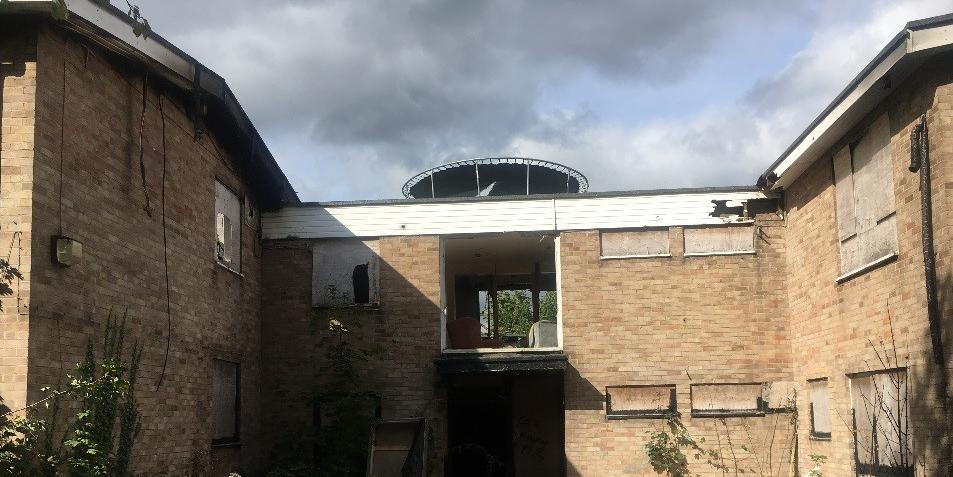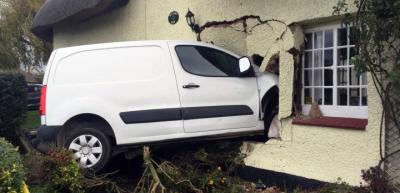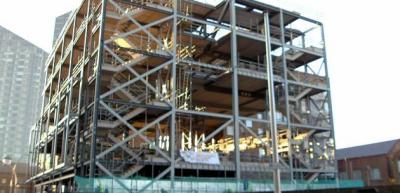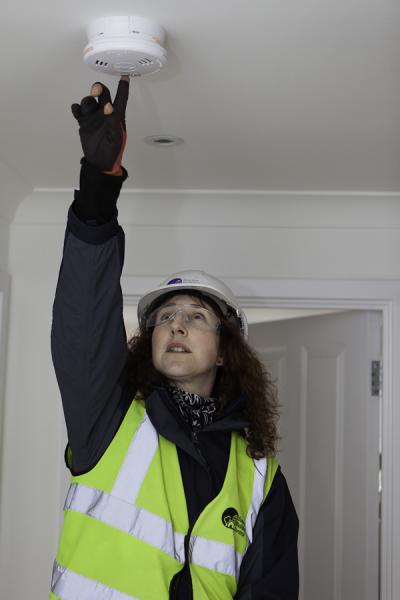A dangerous structure with a very dangerous rooftop trampoline
An LABC member took this photo whilst attending a fire damaged building that has been under attack from vandalism. The owner was constantly attending to re-board and re-erect perimeter fencing to keep the site secure.
When asked why the trampoline was on the roof, he said it was so the little darlings (not his words) could launch themselves off the roof and leave his building alone for good!
While this sentiment might be amusing, unfortunately legislation dictates that the little darlings shouldn’t actually be able to get to the trampoline or any other specialist gymnastic equipment provided.
The death or injury of a child is particularly tragic, and a lot of effort must go into keeping them out of the site and away from danger.
Children don't have the ability to perceive danger in the same way as adults do, often they use their imagination to see construction sites as playgrounds to act out their favourite games, films or television programmes.
The legal situation
However, Regulation 1 of the Occupiers' Liability Act 1984 places a ‘Duty of occupier to persons other than his visitor’ to make sure that any dangers are minimised.
‘An occupier of premises owes a duty to another (not being his visitor) if:
(a) he is aware of the danger or has reasonable grounds to believe that it exists;
(b) he knows or has reasonable grounds to believe that the other is in the vicinity of the danger concerned or that he may come into the vicinity of the danger (in either case, whether the other has lawful authority for being in that vicinity or not); and
(c) the risk is one against which, in all the circumstances of the case, he may reasonably be expected to offer the other some protection.’
This legislation would apply to building sites (including extensions to properties) which are also controlled through the Construction (Design & Management) Regulations 2015 CDM to ensure the health and safety of those on site.
As such there can be serious consequences on property owners should this attractive playground result in injury for anyone on-site with or without permission.
The solution could be to provide more permanent perimeter fencing, more permanent exterior boarding up, introduce security guards or, remove the dangerous structure itself.
Further information
When applied to a building site the HSE guidance below offers a practical view using case studies to show how dangers can be minimised:
Protecting the public: Your next move http://www.hse.gov.uk/pUbns/priced/hsg151.pdf
Managing health and safety in construction http://www.hse.gov.uk/pUbns/priced/l153.pdf
Please Note: Every care was taken to ensure the information was correct at the time of publication. Any written guidance provided does not replace the user’s professional judgement. It is the responsibility of the dutyholder or person carrying out the work to ensure compliance with relevant building regulations or applicable technical standards.
This article was updated on August 2024
Sign up to the building bulletin newsletter
Over 48,000 construction professionals have already signed up for the LABC Building Bulletin.
Join them and receive useful tips, practical technical information and industry news by email once every 6 weeks.
Subscribe to the Building Bulletin




Comments
Add new comment